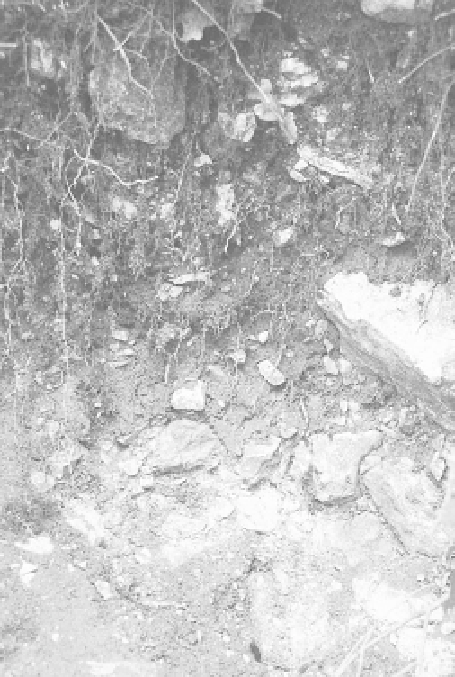Agriculture Reference
In-Depth Information
east-west faults that have been the nucleus for the formation of small valleys
(combes) through weathering and erosion.
Wine making in Burgundy dates from at least the twelfth century when Cis-
tercian and Bendictine monks applied the concept of
terroir
in small vineyards of
the Côte d'Or. During subsequent centuries, the accumulated empirical knowl-
edge of the relationship between individual
terroirs
and the quality and character
of their wines has led to the recognition of Grand Crus, Premier Crus, and Vil-
lage categories of wine. Planting density in the Côte d'Or is usually 10,000 vines
per ha. The vigneron aims to grow small bunches and berries, with a limited num-
ber of shoots and bunches per meter of shoot, to produce a balanced vine (see
box 9.1). For AOC wines, irrigation is not permitted, and yields are restricted to
5 t/ha. As in the Bordeaux region, the key soil properties that determine wine
quality are slope, aspect, stoniness, and clay content, which influence primarily
drainage during winter and spring, and water retention and release during summer.
The Soils and Wines
Côte d'Or
. This subregion is the home of the Pinot Noir grape, which is grown
predominantly in the communes of the Côte de Nuits on relatively shallow soils,
the Rendzinas and Calcareous Brown Soils formed on hard crinoidal limestone
(Middle Bajocian) and the “oyster marl” (Wilson 1998). The pH is neutral to al-
kaline. Under native forest, these soils were rich in organic matter, as seen in fig-
ure 9.6. But after long periods of cultivation, much of the organic-rich A horizon
9.4.2
A Calcic Humifère Brunisol
(Humic Calcareous Brown Soil)
under forest in the Côte d'Or.
Photograph by the author. See
color insert.
Figure 9.6

